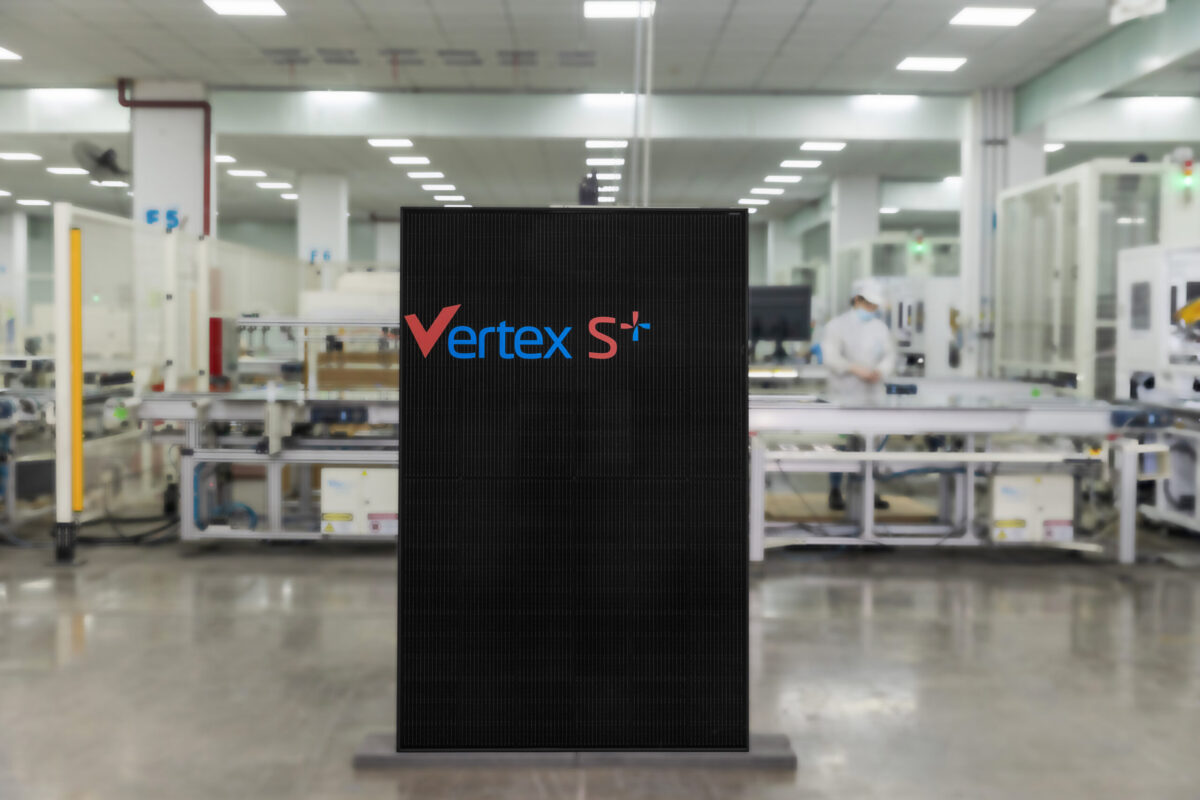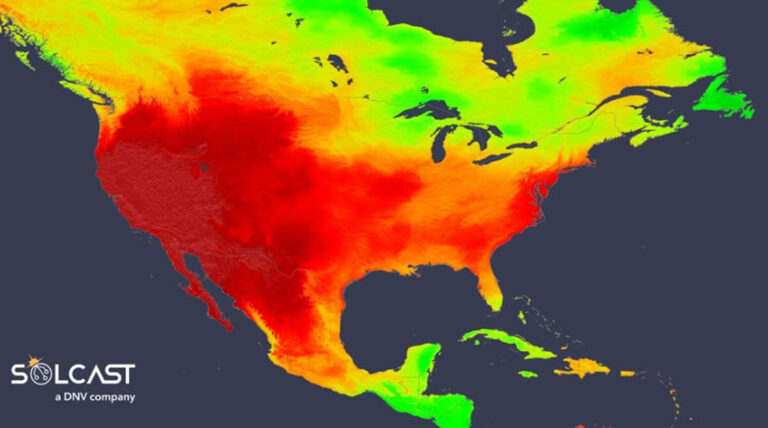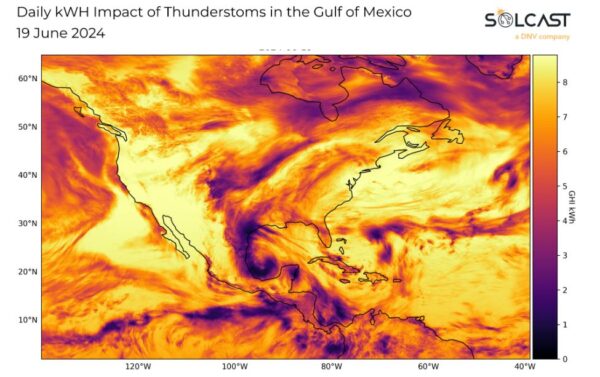In a new weekly update for pv magazineSolcast, a DNV company, reports that summer weather and a heat dome have increased radiation on both U.S. coasts. As a result, much of the continental United States saw insolation moderately above average, 5-10% above the historical June average, with the increase most notable along the East Coast.
Summer weather and a heat dome have led to increased radiation intensity on both US coasts, with the strongest impact in the Northeast, while New Mexico and regions in the Midwest suffered below-average insolation due to increased cloud cover and atmospheric disturbances, according to analysis using the Solcast API.
Over much of the continental United States, insolation was moderately above average, 5-10% above the historical June average, with the increase most notable along the East Coast. The ‘heat dome’ that dominated much of June was accompanied by subsidence in the upper atmosphere, which suppressed cloud formation, allowing more sunlight to reach the ground. In contrast, the Gulf of Mexico experienced more precipitation and cloud cover. However, prevailing winds kept most of these clouds offshore, with the exception of the tip of Florida. In the Great Lakes region, irradiance was up to 10% below average due to additional heat-enhancing evaporation and cloud formation.
Despite the heat wave, irradiation in New Mexico was 5-10% lower than normal. This anomaly was caused by a tropical disturbance in the Gulf of Mexico, which was observed on June 19. This disturbance brought moisture and atmospheric instability, which caused thunderstorms over New Mexico a few days later.
These thunderstorms caused flash flooding and large hail in the region. While these events are not widespread enough to completely extinguish the wildfires across the state, they have had an impact on solar panel performance. Hail can damage and destroy solar panels, but many large-scale solar farms at this latitude use single-axis tracking systems that can store panels in a vertical position to reduce the risk of damage. Smoke from forest fires also affects irradiation by contaminating panels and reducing light transmission through the atmosphere.
Popular content

This year the summer solstice took place on June 20. As the sun reaches its highest point in the sky in the Northern Hemisphere, irradiance also typically peaks around this time of year in North America. However, in Central America this is somewhat offset by the
increased cloud cover during the tropical wet season.
Solcast produces these figures by tracking clouds and aerosols worldwide at a resolution of 1-2 km, using proprietary satellite data AI/ML algorithms. This data is used to drive irradiance models, allowing Solcast to calculate high-resolution irradiance, with a typical deviation of less than 2%, as well as cloud tracking predictions. This data is used by more than 300 companies that manage more than 150 GW of solar energy worldwide.
The views and opinions expressed in this article are those of the author and do not necessarily reflect those of the author pv magazine.
This content is copyrighted and may not be reused. If you would like to collaborate with us and reuse some of our content, please contact: editors@pv-magazine.com.



